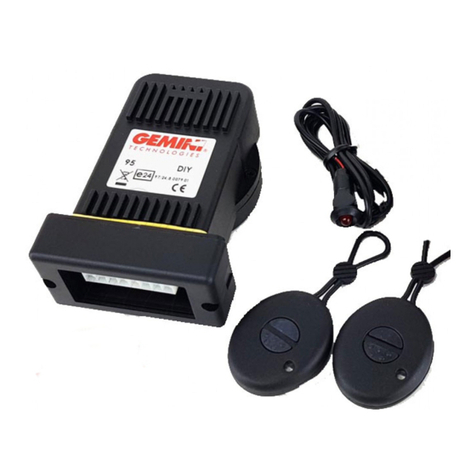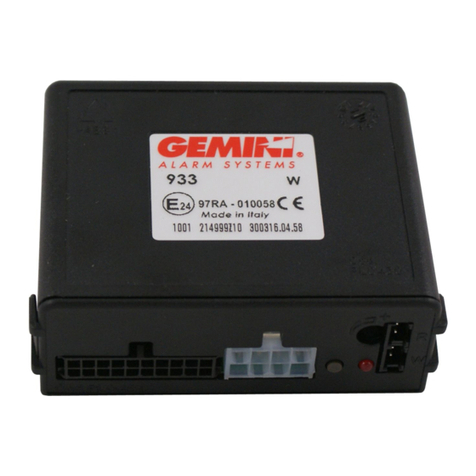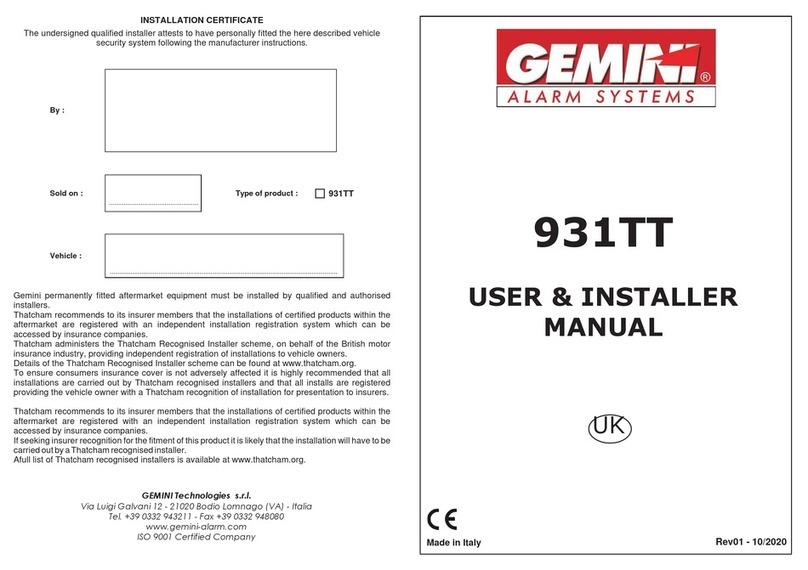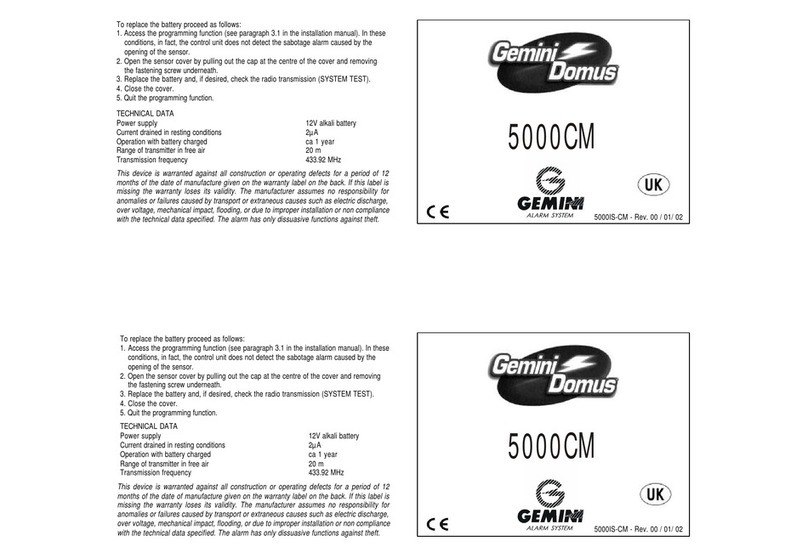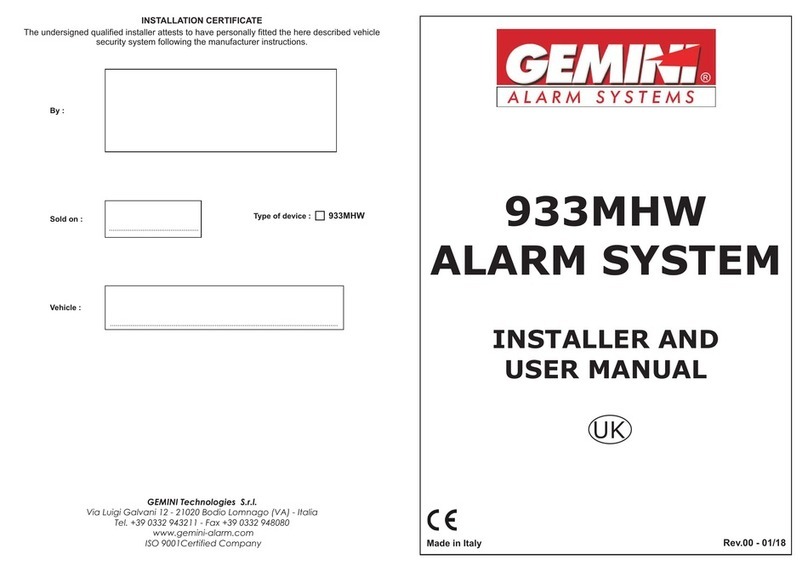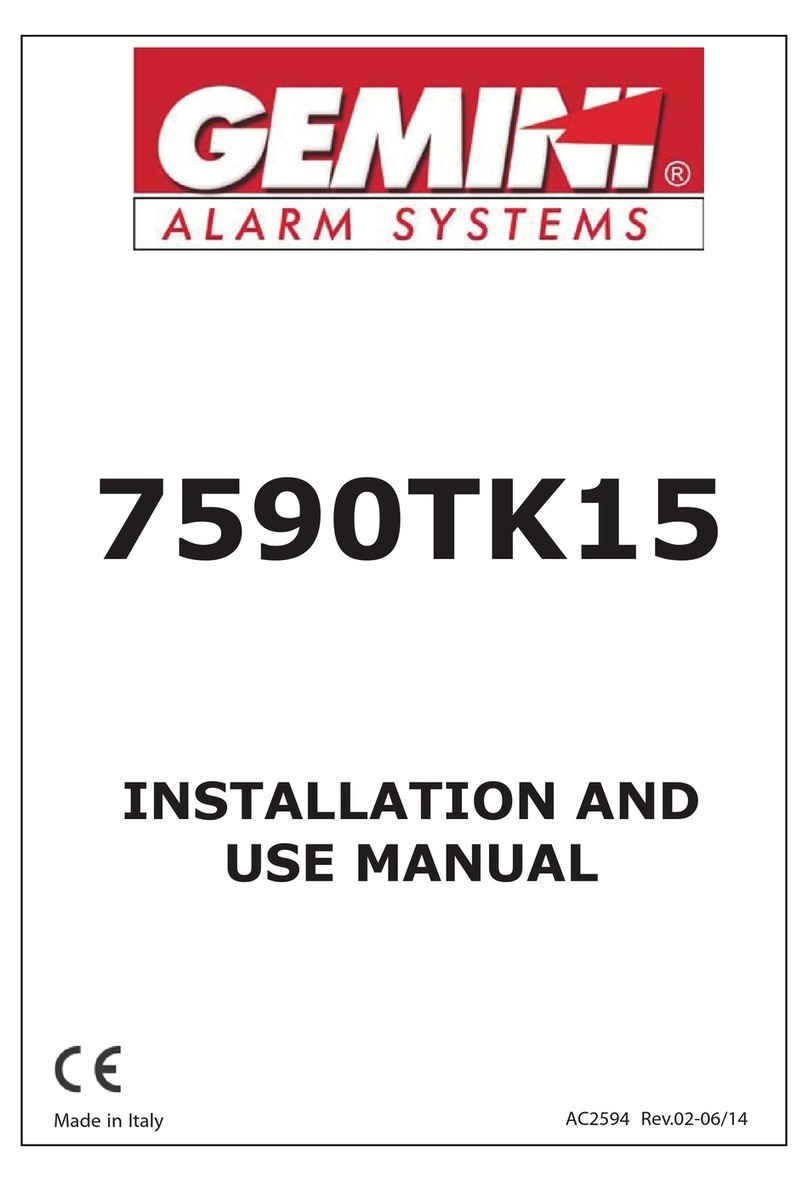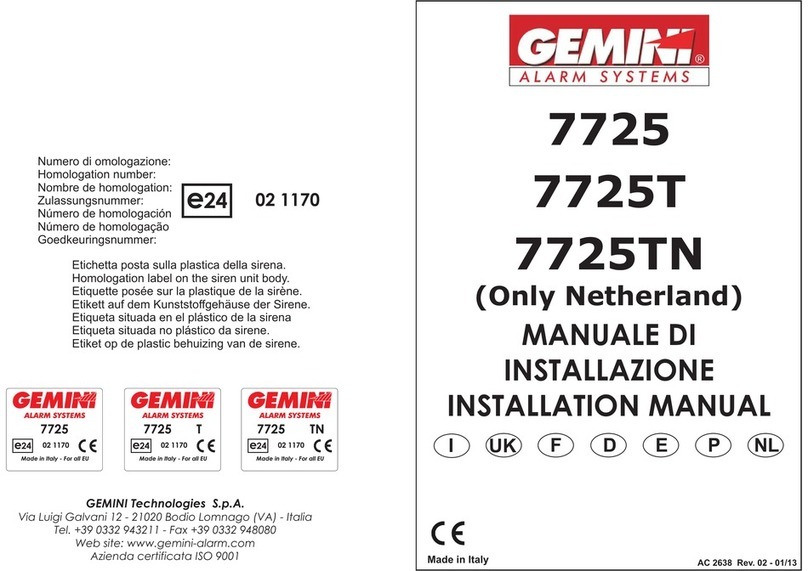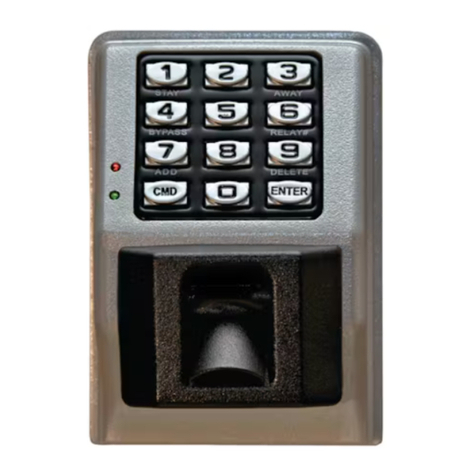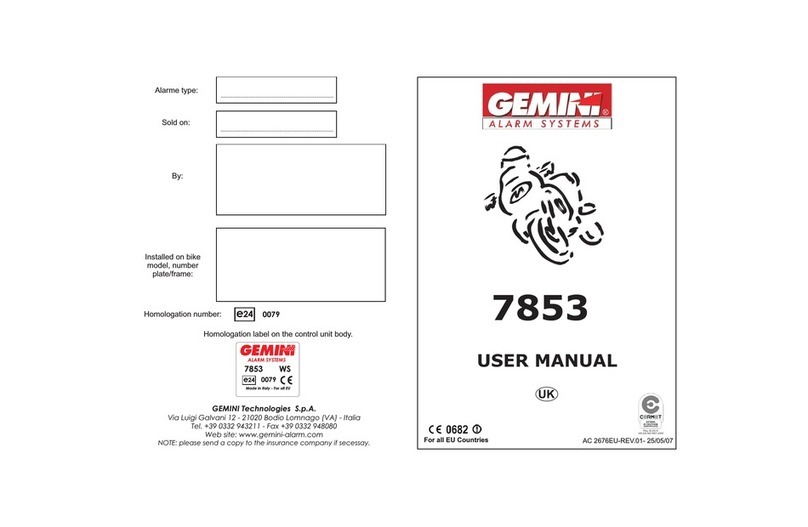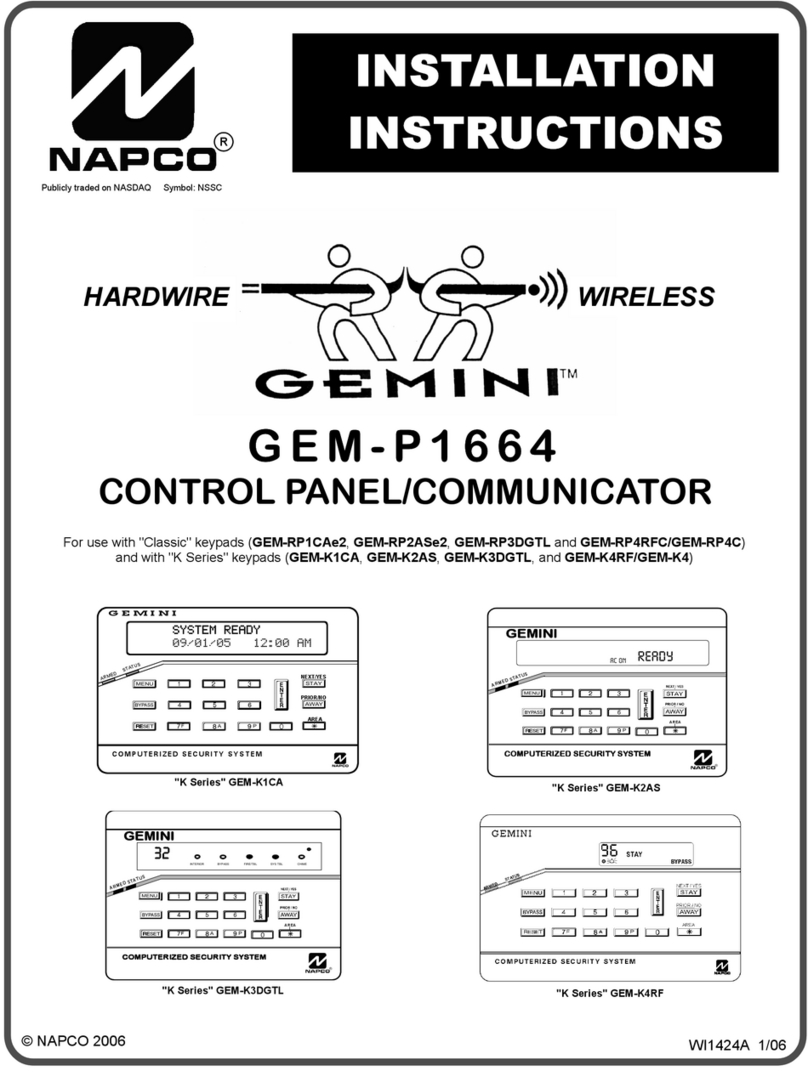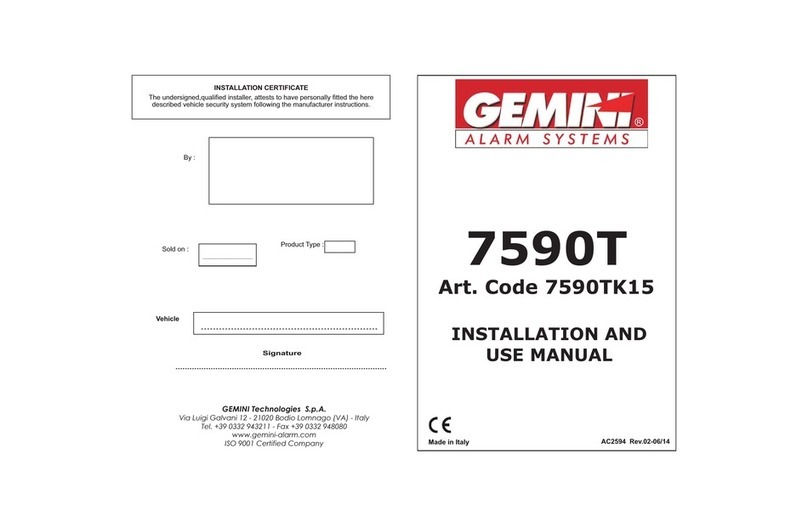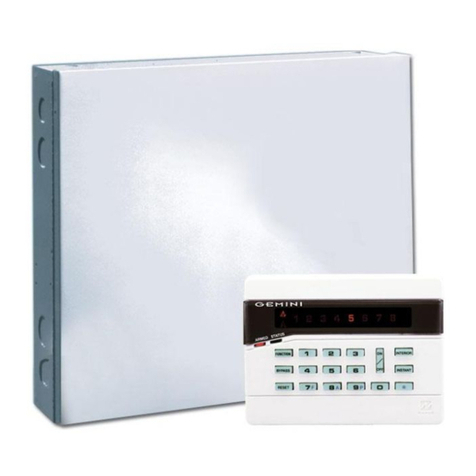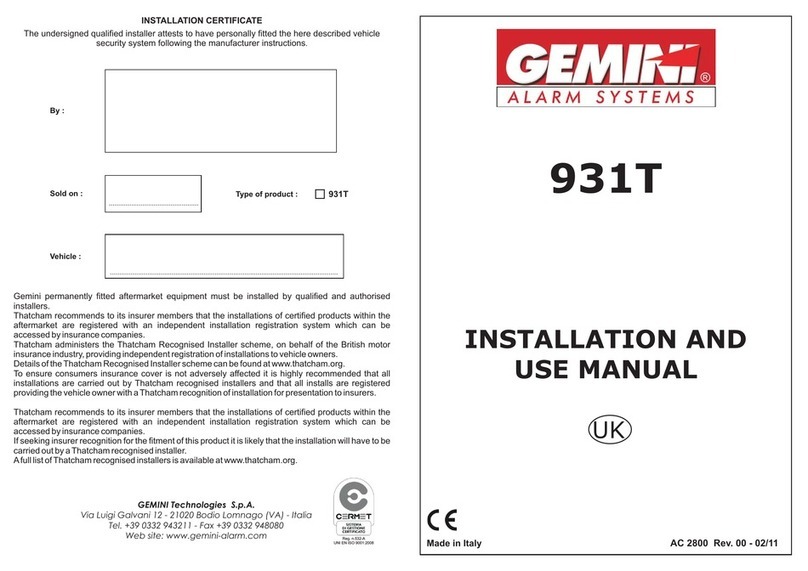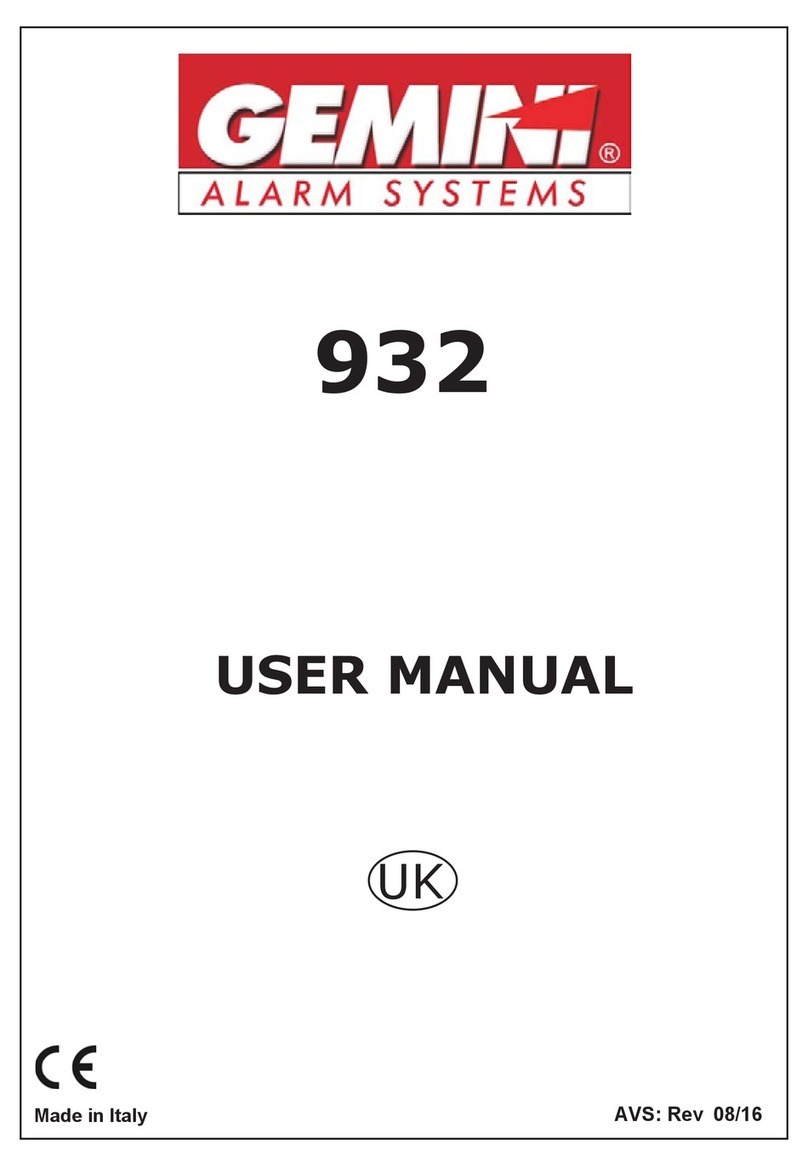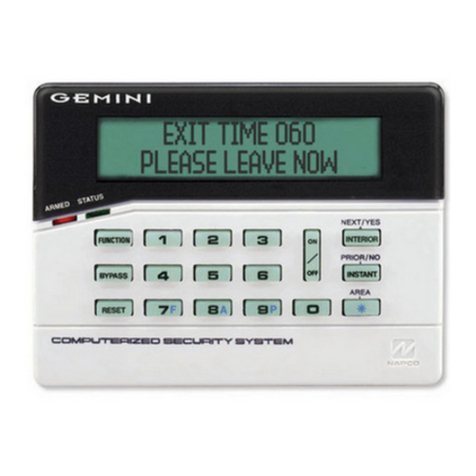
GEM-P816 Installation Instructions
Page 7
NAPCO Security Systems
R
ORDERING INFORMATION
System Components
GEM-K1CA: 32-Character LCD Burg & Fire Keypad with 4
EOL Zones.
GEM-K2AS: LCD Burg & Fire Keypad with remote panic.
GEM-K3DGTL: Burg & Fire Keypad.
GEM-K4: Digital Icon Burg & Fire Keypad.
GEM-K4RF: Digital Icon Burg & Fire Keypad with Integral
RF Receiver.
GEM-P816: Residential UL-Listed Burg and Fire Control
Panel.
GEM-RP1CAe2: 32-Character LCD Burg & Fire Keypad
with 4 EOL Zones.
GEM-RP2ASe2: LCD Burg & Fire Keypad with remote
panic.
GEM-RP3DGTL: Burg & Fire Keypad.
GEM-RP4C: Digital Icon Burg & Fire Keypad.
GEM-RP4RFC: Digital Icon Burg & Fire Keypad with Inte-
gral RF Receiver.
Optional Accessories and Peripherals
GEM-EVA 1: Electronic Voice Annunciator
GEM-RECV8: Wireless Receiver, 8 Zones
GEM-RECV16: Wireless Receiver, 16 Zones
GEM-RECV32: Wireless Receiver, 32 Zones
GEM-RECV96: Wireless Receiver, 64 Zones
GEM-TRANS2: Window/Door Transmitter, 2-Point
GEM-RTRANS: Recessed Window/Door Transmitter
GEM-KEYF: Keyfob Transmitter
GEM-SMK: Wireless Smoke Detector
GEM-PIR: Wireless PIR
GEM-PIRPET: Wireless Pet Immune Transmitter*
GEM-RS232: Isolated Computer Interface
GEM-DT: Wireless Dual-Technology Sensor
GEM-GB: Wireless Glass-Break Detector*
GEM-TEMP64: Indoor/outdoor programmable temperature
sensor*
RM3008: Relay Module (in enclosure)
NL-MOD: NetLink™ TCP/IP reporting module
NL-CSRCV: NetLink™ TCP/IP receiver application
NL-MODCONFIG: NetLink™ NL-MOD configuration soft-
ware
NL-ULBD: NetLink™ Transient protection device
NL-CSRCV/PC: NetLink™ TCP/IP receiver application
preinstalled in a PC
M278: Line-Reversal Module
FT2200: End-of-Line Relay/Resistor Supervisory Module
RB1000: Relay Board, single output*
RBATH1: Dual Battery Harness
RPB-3: Universal Keypad Mounting Box
WL1: Wire Assembly with Lug Connector, 20”
VERI-PHONE: Two-Way Voice/Listen-In Module
PCD-Windows: Downloading Software (for Windows) for
IBM PC-Compatible, V5.4.1 or greater
PCI2000/3000: Software Interface for IBM PC-Compatible
Computer*
PCI-MINI: Notebook Computer Interface*
W834-1: Keypad Cable, plug-in (20”)
OI193: User Guide, GEM-RP1CAe2
OI192: User Guide, GEM-RP2ASe2
OI249: User Guide, GEM-RP3DGTL
OI278: User Guide, GEM-RP4C & RP4RFC
WI1212: Installation Manual, GEM-RP4C
WI1128: Installation Manual, GEM-RP4RFC
OI279: User Guide, GEM-K1CA
OI280: User Guide, GEM-K2AS
OI281: User Guide, GEM-K3DGTL
OI283: User Guide, GEM-K4 & K4RF
WI1178: Installation Manual, GEM-K4
WI1179: Installation Manual, GEM-K4RF
WI995: GEM-P816 Programming Instructions (using GEM-
RP1CAe2 / GEM-K1CA keypads).
WI1182: GEM-P816 Programming Instructions (using GEM-
RP2ASe2 / GEM-K2AS or GEM-RP3DGTL / GEM-
K3DGTL keypads).
WI994: GEM-P816 Installation Instructions
WIZARD IIe: Telephone Interface Module*
GEM-EZM4/8: 4-16 Zone Expansion Zone Module
PS3002: Power-Supply Module, 13.2Vdc, 1.9A*
EOL2.2K: End-of-Line Resistor Assy., 2.2k Ohm
EOL4.7K: End-of-Line Resistor Assy., 4.7k Ohm
GEM-EZM8: 8 Zone Expansion Zone Module
GEM-OUT8: 8 output active low output module
TRF11: Transformer, 16.5Vac/40VA, Class 2
TRF14: Transformer, 16.5Vac/50VA, Class 2
*Not Investigated by UL
UL Listings
Household Burglar Alarm System Units: UL1023
Household Fire Warning System Units: UL985
Security Industry Association (SIA) False Alarm Reduction
Standard CP-01
** Pending
